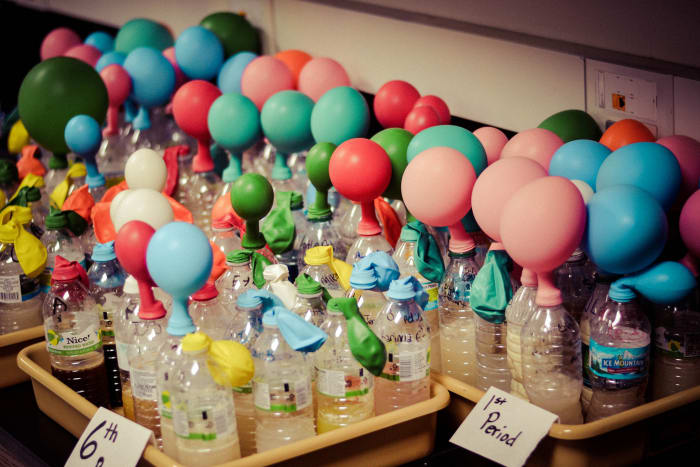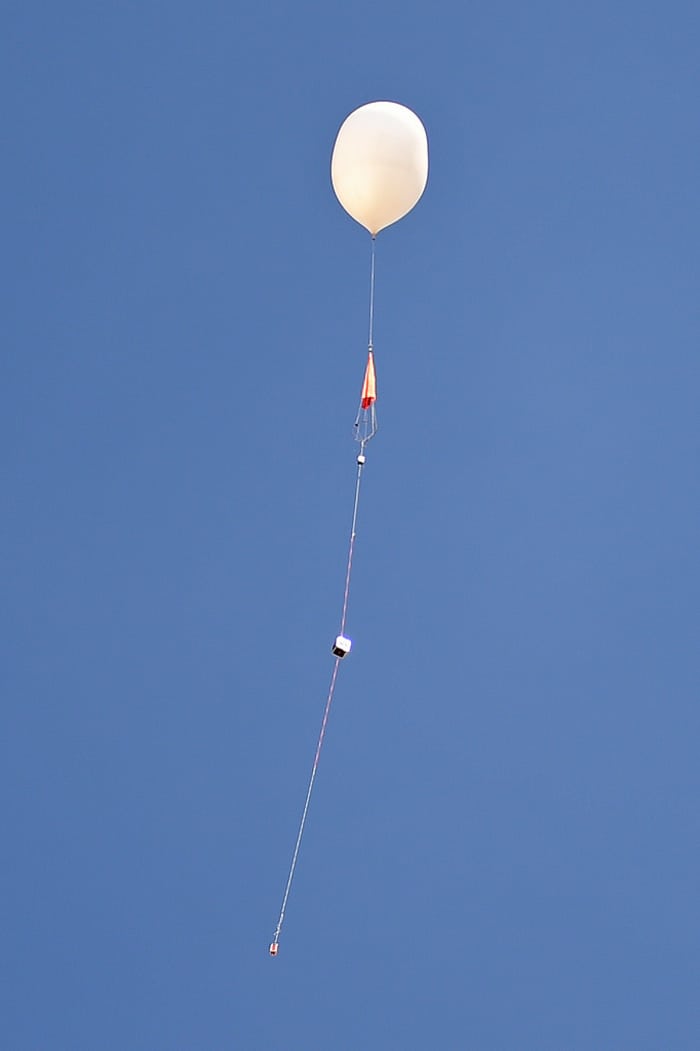Making a helium balloon
The secret to making balloons fly!
Who isn’t cheered by the sight of these colorful floating orbs? But since helium balloons are an expensive indulgence nowadays, you might wonder whether you can make helium balloons at home. So can you? Let’s get right into it!

Helium is a non-toxic, monatomic gas that holds second place in Mendeleev’s periodic table of elements. It is colorless, odorless, and much lighter than oxygen and carbon dioxide.
While oxygen’s molecular mass is 32, and carbon dioxide’s is 44, helium’s molecular mass is an incredibly light 4. So balloons filled with the monatomic gas can fly, while carbon dioxide weighs them down. The lighter the balloon’s gaseous contents, the greater its chances to fly.
Where you can find helium balloons
The helium used in balloons is obtained by deep-freezing natural gas. Unfortunately, since it’s impossible to make helium via a chemical reaction, it would require a considerable sum of money to blow up helium balloons yourself. If you need a helium balloon and want to inflate it at home, it’s best to buy a special canister of helium. But there are many other interesting experiments that you can perform with balloons that will lead you to new chemistry discoveries.
A balloon filled with soda and vinegar
Interestingly, a reaction between baking soda (NaHCO₃) and vinegar (CH₃COOH) releases a great deal of carbon dioxide. Of course, carbon dioxide’s atomic mass is too great to allow the balloon to fly, but the experiment is fascinating and can easily be done at home.

This is a handy trick to get a child interested in chemistry! The process of blowing up the balloon with a bottle will pique their interest in science, and perhaps their desire to continue making their own discoveries.
You’ll need:
-
acetic acid, which can be found in any kitchen (there are different types of vinegar, but practically any will do);
-
baking soda;
-
an empty 1.5-liter bottle or a flask;
-
gloves;
-
balloon.
This is a simple trick to do at home – even a child can do it. But be sure to wear rubber gloves! Vinegar, especially strong vinegar, can cause a mild chemical burn. Just keep in mind that baking soda or soap will neutralize the acid.
Any and all experiments involving risky chemical substances should be conducted under adult supervision.
Pour two teaspoons of baking soda into your balloon, and pour half a cup of acetic acid into the bottle. Don’t add too much soda! Insert the bottleneck into the balloon’s neck and straighten the balloon: the baking soda in the balloon will fall into the bottle and meet the vinegar. An intense reaction will begin, releasing CO2 and making the balloon inflate. If the reaction is too weak to inflate the balloon, add more vinegar and baking soda, but don’t shake the solution.
This method is convenient if you find it difficult to blow up a balloon.
Flying without helium
You can use this method to inflate a balloon that will, in fact, fly. Though this experiment does work, it poses a risk of fire, so perform it outdoors. Goggles, a lab coat, and gloves are non-negotiably necessary precautionary measures.
Keep in mind that the substance released from the solution obtained contains hydrogen, which is explosive! Not only should you do this experiment outside, but you also should never store such balloons at home: the hydrogen will explode if it comes into contact with a spark. Click here to find out which experiments with hydrogen you can do at home. You should also be careful during the experiment itself: if you add too much foil and cleaning agent, or if you shake the contents carelessly, you can burn yourself on the flask. Don’t breathe in the gas that is released over the course of the experiment. You’ll need:
-
aluminum foil;
-
room-temperature water;
-
a balloon;
-
sodium hydroxide;
-
a glass flask.
You may also need someone to help you. A good source of sodium hydroxide (or another strong alkali) are the alkaline detergents usually sold in hardware stores.
First, make a few small foil balls. Pour the cleaning agent into the flask and add some water. Add the foil balls you’ve made. Don’t shake the solution! You’ll cause a vigorous reaction – the balloon will inflate, but the water vapor that results from this reaction will condense inside the balloon and weigh it down, preventing the balloon from flying.

If you don’t shake the solution, the reaction will take place slowly, but the condensate inside the balloon will run back into the flask and no longer weigh the balloon down. Attention plus patience will yield much better results! And it will be worth it in the end: your balloon will fly as though filled with helium!